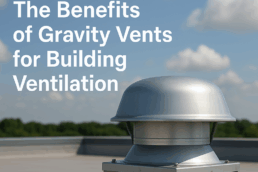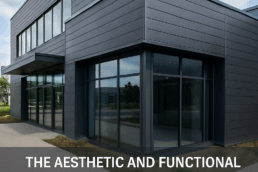Expanded metal and perforated metal are two popular materials used in construction and manufacturing. This blog compares expanded metal vs perforated metal to help you decide which is best for your project. Understanding the different characteristics, applications, and advantages of each can guide you in making an informed decision.
Expanded Metal Vs Perforated Metal
Characteristics of Expanded Metal
Expanded metal is created by stretching and expanding metal sheets, resulting in a mesh-like pattern. This process involves cutting and pulling the material, which transforms it into an expanded form without wasting material. The resulting product is a single piece of metal that features a series of diamond-shaped openings to provide a combination of strength and flexibility.
Applications of Expanded Metal
Expanded metal is widely used in various applications due to its strength and lightweight nature. Some common uses include:
- Walkways: The durability and slip-resistant properties make expanded metal ideal for creating safe walkways, especially in industrial settings.
- Grating: It serves as an excellent material for grating. It provides a strong and reliable surface for platforms and stair treads.
- Fencing: Its open design offers security while allowing visibility. Suitable for fences in commercial and residential areas.
Advantages of Expanded Metal
- Strength: The continuous structure of expanded metal ensures it is robust and able to withstand heavy loads.
- Lightweight: Despite its strength, expanded metal is relatively lightweight. This makes it easy to handle and install.
- Ventilation: The mesh pattern allows for excellent airflow, which is vital in many industrial and architectural applications.
Perforated Metal
Characteristics of Perforated Metal
Perforated metal is made by punching holes into metal sheets, creating various patterns. This method involves the use of machinery to systematically punch holes in the material, resulting in a sheet with numerous openings. The holes can be arranged in different shapes and sizes for significant customization.
Applications of Perforated Metal
Due to its versatility and aesthetic appeal, perforated metal is used in a variety of applications, including:
- Architectural Facades: Its decorative potential makes it a popular choice for building facades. It adds visual interest while providing functionality.
- Screening: Perforated metal is effective for screening. It offers privacy while allowing light and air to pass through.
- Decorative Panels: Its customizable patterns make it perfect for interior and exterior decorative panels, enhancing the aesthetic of any space.
Advantages of Perforated Metal
- Aesthetic Appeal: The ability to customize patterns makes perforated metal highly attractive for architectural and decorative uses.
- Customizable Patterns: The holes can be designed in various shapes and sizes, providing flexibility in design and functionality.
- Ventilation and Light Control: Perforated metal offers excellent ventilation and can be designed to control the amount of light passing through. It’s valued for both functional and decorative applications.
Comparison
Strength and Durability
When comparing the strength and durability of expanded metal vs. perforated metal, expanded metal generally comes out on top. The continuous structure of expanded metal sheets makes them more reliable and able to withstand higher loads and stresses. In contrast, perforated metal may not match the continuous support provided by expanded metal due to the presence of punched holes.
Aesthetic Appeal
Perforated metal offers superior design flexibility with customizable patterns. This makes it more suitable for projects where aesthetic appeal is a significant factor. The ability to choose different hole sizes, shapes, and patterns means that perforated metal can be customized to fit the visual and functional requirements of a specific project more effectively than expanded metal.
Ventilation and Light
Both expanded metal and perforated metal provide good ventilation, but they differ in their light control capabilities. Perforated metal tends to offer better light control due to the precise nature of the punched holes. This makes it a preferred choice for applications requiring specific light diffusion and control, such as in building facades or decorative panels. Expanded metal also provides ventilation. Yet, it may not offer the same level of precision in light control.
Choosing between expanded metal and perforated metal depends on your project’s specific needs. Expanded metal is ideal for applications requiring strength, durability, and excellent ventilation. On the other hand, perforated metal excels in aesthetic appeal, customizable patterns, and precise light control. By considering factors that influence the difference between expanded and perforated metal, you can make an informed decision on which material is best suited for your project.
Ready to decide on the best material for your next project? At C&J Metal Products, we specialize in custom sheet metal fabrication and offer both expanded and perforated metal options. Our expertise and commitment to quality ensure that we can meet your specific needs. Contact us today to discuss your project and find the perfect solution with C&J Metal Products.



